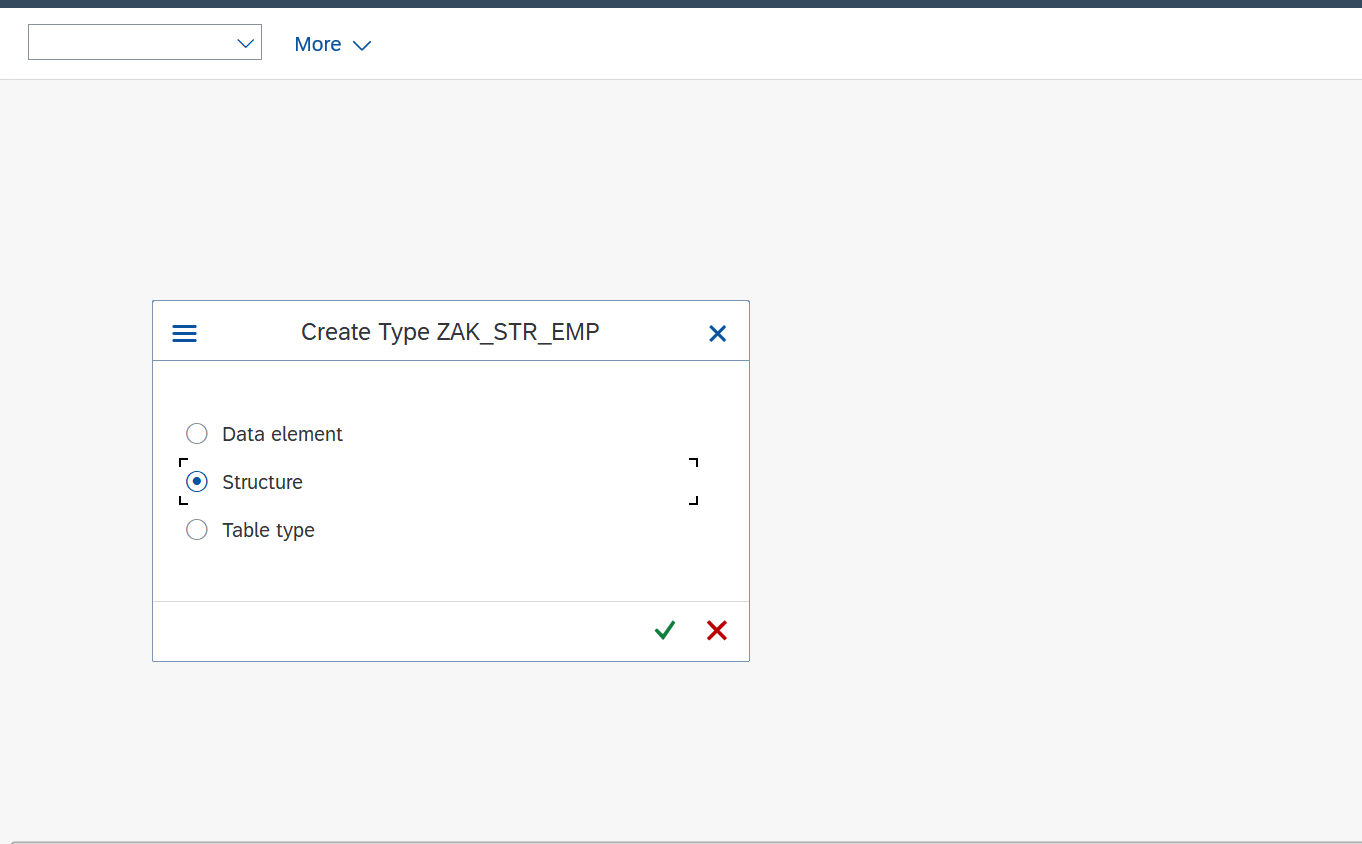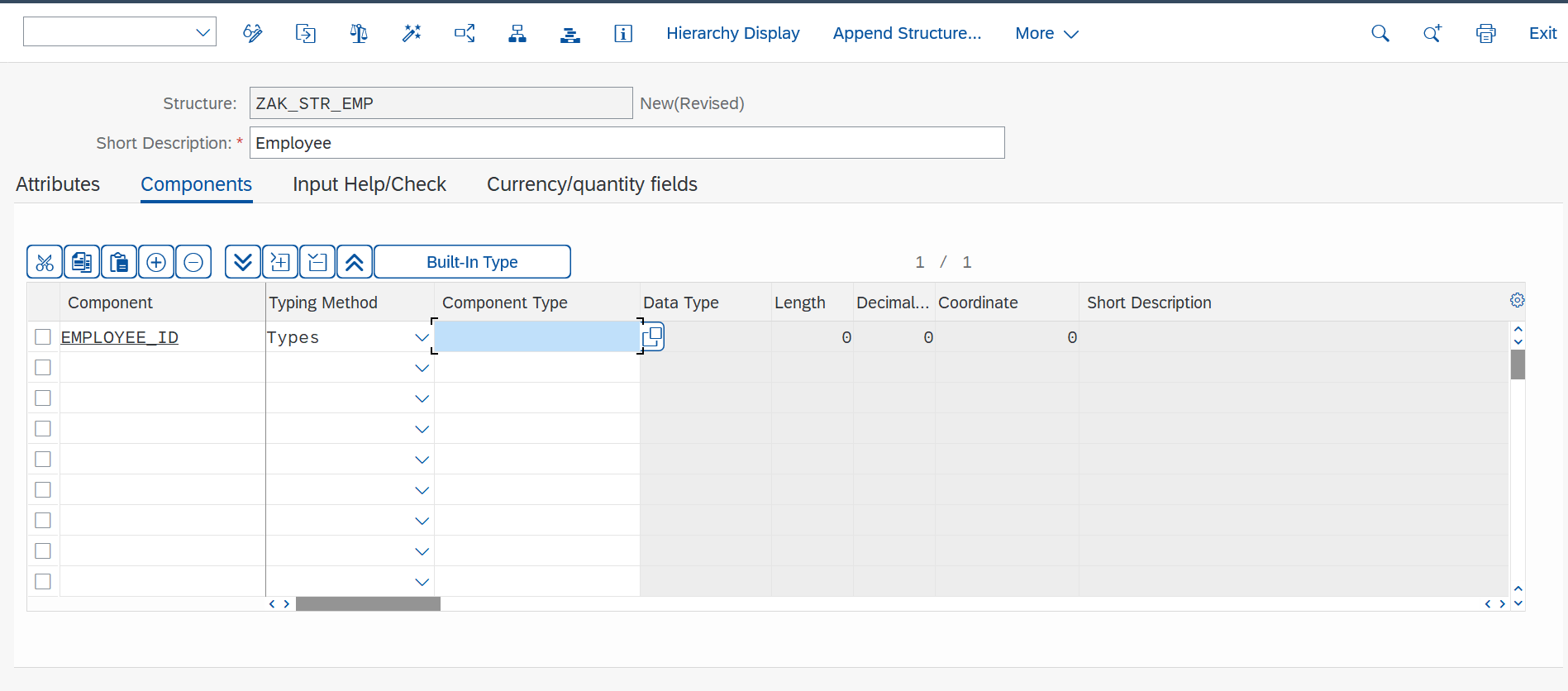
- SAP Community
- Groups
- Interest Groups
- Application Development
- Blog Posts
- Getting Started with ABAP: How to Create Flat and ...
Application Development Blog Posts
Learn and share on deeper, cross technology development topics such as integration and connectivity, automation, cloud extensibility, developing at scale, and security.
Turn on suggestions
Auto-suggest helps you quickly narrow down your search results by suggesting possible matches as you type.
Showing results for
anujawani2426
Active Participant
Options
- Subscribe to RSS Feed
- Mark as New
- Mark as Read
- Bookmark
- Subscribe
- Printer Friendly Page
- Report Inappropriate Content
06-19-2022
9:03 AM
This is the next blog post in this series. Here is the previous blog post Getting Started With ABAP: Table Maintenance Generator
In the previous blog post, we learned what is table maintenance generator.
In this blog post we will learn types of structure and how to create flat and nested structure.
For more information you can refer this document Types of structures
We can create this structure from SE11 that is global structure that means we can reuse it in more than one program. Also, we can create structure through ABAP programming that we will see in later part.
In this blog post we will see how to create structure through SE11.
Step 1: Go to SE11 and click on Data Type.
Step 2: Enter the name of Structure that you want to create and click on Create.
Step 3: Select Structure and press Enter.
Step 4: Give the short description.
Step 5: Enter Component that means field name Employee_id and select typing method as Types.
Step 6: We have already created Employee_id field in table so we can use here. Enter Component type as data element name which is created earlier. If not created you can create data element first and enter that name.
In this way, you can add more fields as per your requirement.
Step 7: Save and activate structure.
Here Flat Structure is created.
Step 1: Go to SE11 and select Data type. Enter name of structure that you want to create. Click on Create.
Step 2: Select Structure and Press Enter.
Step 3: Give short description. Enter the name of component and select types.
Step 4: Enter component type as flat structure name that we have created earlier. Save and activate it.
You can add more components and more than one flat structure as component. Nested structure contains at least one flat structure.
Here you can check next blog post Getting Started with ABAP: How to Create Table Type and Deep Structure
Here we have completed the how to create Flat and Nested structure.
Follow my profile to be notified of the next blog post. Please feel free to ask any questions you have in the comments section below.
In the previous blog post, we learned what is table maintenance generator.
In this blog post we will learn types of structure and how to create flat and nested structure.
Types of Structure
- Flat Structure
- Nested Structure
- Deep Structure
For more information you can refer this document Types of structures
Flat Structure
We can create this structure from SE11 that is global structure that means we can reuse it in more than one program. Also, we can create structure through ABAP programming that we will see in later part.
In this blog post we will see how to create structure through SE11.
How to Create Flat Structure
Step 1: Go to SE11 and click on Data Type.

Step 2: Enter the name of Structure that you want to create and click on Create.

Step 3: Select Structure and press Enter.

Step 4: Give the short description.

Step 5: Enter Component that means field name Employee_id and select typing method as Types.

Step 6: We have already created Employee_id field in table so we can use here. Enter Component type as data element name which is created earlier. If not created you can create data element first and enter that name.

In this way, you can add more fields as per your requirement.
Step 7: Save and activate structure.

Here Flat Structure is created.
Nested Structure
How to create Nested Structure
Step 1: Go to SE11 and select Data type. Enter name of structure that you want to create. Click on Create.

Step 2: Select Structure and Press Enter.

Step 3: Give short description. Enter the name of component and select types.

Step 4: Enter component type as flat structure name that we have created earlier. Save and activate it.

You can add more components and more than one flat structure as component. Nested structure contains at least one flat structure.
Here you can check next blog post Getting Started with ABAP: How to Create Table Type and Deep Structure
Here we have completed the how to create Flat and Nested structure.
Follow my profile to be notified of the next blog post. Please feel free to ask any questions you have in the comments section below.
- SAP Managed Tags:
- ABAP Development
4 Comments
You must be a registered user to add a comment. If you've already registered, sign in. Otherwise, register and sign in.
Labels in this area
-
A Dynamic Memory Allocation Tool
1 -
ABAP
8 -
abap cds
1 -
ABAP CDS Views
14 -
ABAP class
1 -
ABAP Cloud
1 -
ABAP Development
4 -
ABAP in Eclipse
1 -
ABAP Keyword Documentation
2 -
ABAP OOABAP
2 -
ABAP Programming
1 -
abap technical
1 -
ABAP test cockpit
7 -
ABAP test cokpit
1 -
ADT
1 -
Advanced Event Mesh
1 -
AEM
1 -
AI
1 -
API and Integration
1 -
APIs
8 -
APIs ABAP
1 -
App Dev and Integration
1 -
Application Development
2 -
application job
1 -
archivelinks
1 -
Automation
4 -
BTP
1 -
CAP
1 -
CAPM
1 -
Career Development
3 -
CL_GUI_FRONTEND_SERVICES
1 -
CL_SALV_TABLE
1 -
Cloud Extensibility
8 -
Cloud Native
7 -
Cloud Platform Integration
1 -
CloudEvents
2 -
CMIS
1 -
Connection
1 -
container
1 -
Debugging
2 -
Developer extensibility
1 -
Developing at Scale
4 -
DMS
1 -
dynamic logpoints
1 -
Eclipse ADT ABAP Development Tools
1 -
EDA
1 -
Event Mesh
1 -
Expert
1 -
Field Symbols in ABAP
1 -
Fiori
1 -
Fiori App Extension
1 -
Forms & Templates
1 -
General
1 -
Getting Started
1 -
IBM watsonx
1 -
Integration & Connectivity
10 -
Introduction
1 -
JavaScripts used by Adobe Forms
1 -
joule
1 -
NodeJS
1 -
ODATA
3 -
OOABAP
3 -
Outbound queue
1 -
Product Updates
1 -
Programming Models
13 -
Restful webservices Using POST MAN
1 -
RFC
1 -
RFFOEDI1
1 -
SAP BAS
1 -
SAP BTP
1 -
SAP Build
1 -
SAP Build apps
1 -
SAP Build CodeJam
1 -
SAP CodeTalk
1 -
SAP Odata
1 -
SAP UI5
1 -
SAP UI5 Custom Library
1 -
SAPEnhancements
1 -
SapMachine
1 -
security
3 -
text editor
1 -
Tools
17 -
User Experience
5
Top kudoed authors
| User | Count |
|---|---|
| 3 | |
| 3 | |
| 3 | |
| 2 | |
| 2 | |
| 2 | |
| 2 | |
| 1 | |
| 1 | |
| 1 |